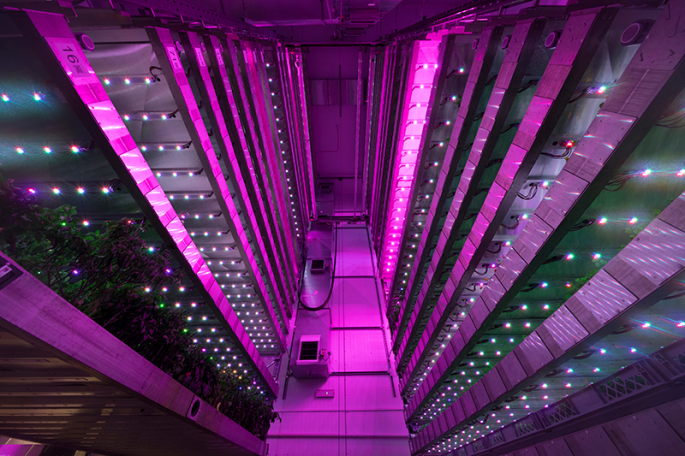The world is consuming more food than it is producing, according to The State of Food Security and Nutrition in the World 2021 report.
With the global population expected to reach 9.7 billion by 2050, a global food crisis is fast approaching.
The report estimates that on average, 768 million people faced world hunger globally in 2020.
The high cost of fresh, healthy produce, combined with high income inequality, means that many cannot afford a healthy diet.
This is especially prevalent in Aotearoa, with almost 40 percent of New Zealand households saying they face food insecurity in the last New Zealand Adult Nutrition Survey, conducted back in 2008/2009.
A company that is answering the call to this crisis is Intelligent Growth Solutions Limited (IGS).
IGS is an Edinburgh-based company that is developing vertical farming systems that may become a common sight in New Zealand in the future.
IGS made its first appearance in New Zealand with its Fieldays Innovation Award win last year in the Growth and Scale category, which recognises innovations that are seeking growth in new markets.
IGS is now in the early stages of talking with interested groups in New Zealand.
IGS CEO, David Farquhar, says that vertical farming is a key element in re-thinking how we grow crops.
'On its own, vertical farming won't solve world hunger or climate change – but it is one answer, and we believe it will help in both cases.”
'Ultimately, we think up to 30 per cent of the world's diet could be grown in vertical farms,” he predicts.
IGS's vertical farming system uses smart technologies to grow vegetables and fruits indoors in a remote, but highly controlled environment. Seedlings are positioned on trays inside modular multi-level structures IGS calls 'growth towers.”

Multiple crops can be produced in a growth tower including herbs, leafy greens like lettuce and spinach, kale, broccoli, root-based crops such as seed potatoes and soft fruits like strawberries.
Vertical farming doesn't require large amounts of land, they use significantly less water, and can be placed virtually anywhere – meaning they can be located closer to the point of distribution.
'One growth tower covers about 42sqm - up to a 1000th the size of a conventional farm - and can produce 25 tonnes of food. To achieve the same amount on a traditional farm, you would need three to four hectares of land,” David notes.
'As they use a lot less area, towers can be sited anywhere in towns and cities such as disused factory sites, and there's no reason why they couldn't be set up by traditional farmers or growers on their land.”
Fieldays Innovation Awards is now accepting applications for the 2022 intake from individuals and organisations looking to solve the world's food and fibre challenges.
The globally renowned awards clearly represent the innovation lifecycle across three categories: Prototype, Early-Stage, and Growth & Scale. The total prize package is over $60,000 worth of cash, services, and products with tailored opportunities to progress innovations in each award category.
Entries for the Fieldays 2022 Innovation Awards are open now until 1 May 2022. Apply now at fieldays.co.nz/innovation.




1 comment
Really?
Posted on 01-03-2022 18:32 | By morepork
"...40% of New Zealand households saying they face food insecurity..." Forgive my skepticism. I live on a limited fixed income but I have no trouble buying healthy food. Perhaps if I spent a lot of time in pubs and TABs I might have... We are a food producing nation and there is no excuse for people here to be hungry or unable to buy produce. OK, there are times when I won't buy tomatoes or avocados (e.g.) because the price is more than I will pay, but fruit and vegetables are well stocked at my place. I agree that prices have risen, but if food was prioritized over self indulgence, nobody need go hungry. Possibly, with a large family, it gets more difficult, but 40%? If this is actually true and WE can't feed ourselves properly as a nation, I see little hope for the rest of the World.
Leave a Comment
You must be logged in to make a comment.